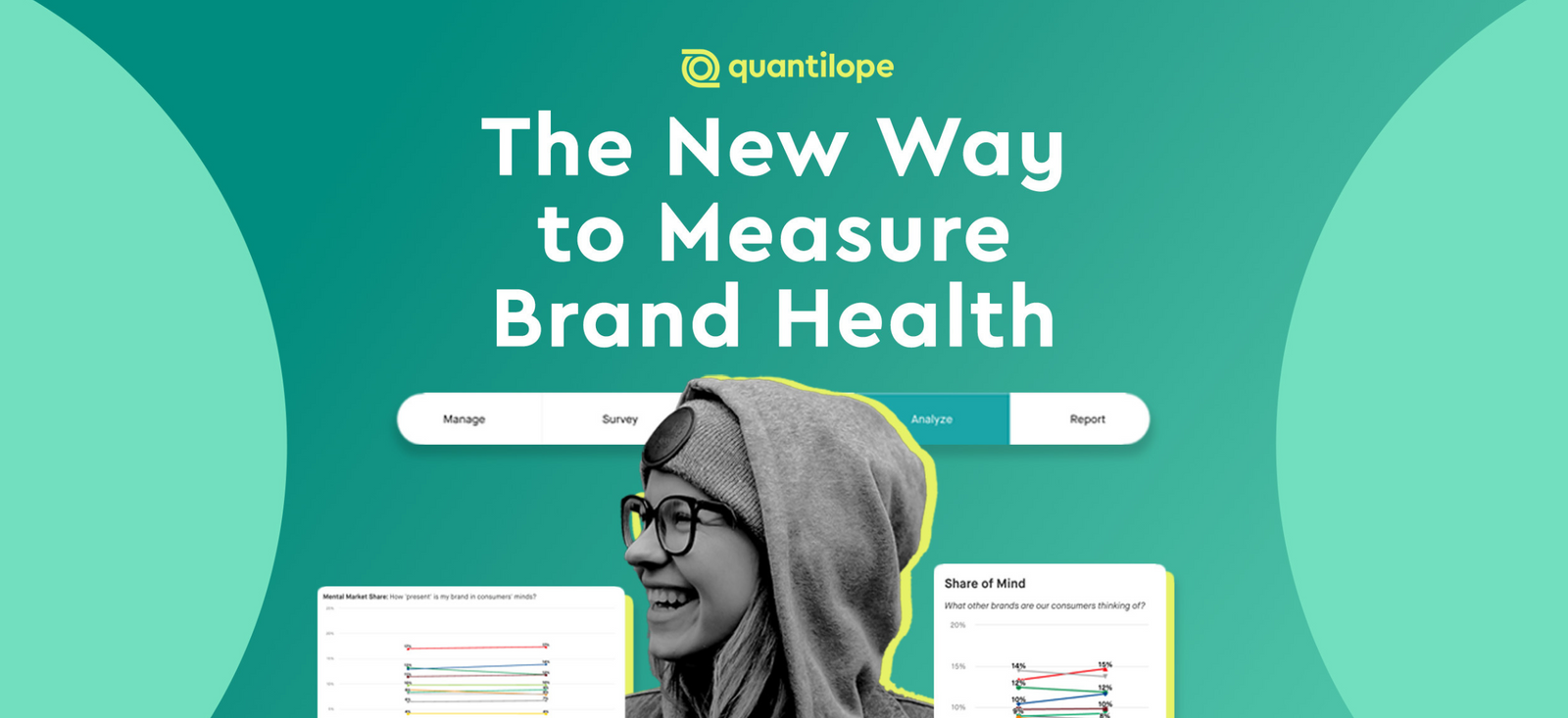The new way insights teams are measuring brand health
Is your current brand tracking solution not cost or time efficient? Are you finding your brand tracking outcomes aren’t always actionable or relevant?

Is your current brand tracking solution not cost or time efficient? Are you finding your brand tracking outcomes aren’t always actionable or relevant?
Most insights teams will know that brand health trackers can be rigid, non-actionable, and inefficient. But brands now have the opportunity to gather brand health tracking insights in a new way to move quicker, smarter, and more strategically. Read on to learn more about brand health tracking, exciting new metrics that have been proven to lead to brand growth and success, and access insights from a study that incorporates these new metrics.
What is brand health tracking and why is it important?
Brand health tracking is an ongoing research survey used to monitor consumers' experience with (and perceptions of) a brand over time. It’s a single study that’s fielded in periodic increments (a.k.a. waves) which might be monthly, quarterly, or annually. A useful brand health tracker should be able to guide future marketing activities and diagnose a brand's performance.
Over time, consumers gravitate toward the brands that are relevant to their needs and provide them with positive experiences, making brand health tracking a crucial measurement for long-term success. Consider Kleenex for example. Their brand health is so strong that anytime a consumer even thinks about buying tissues or asks someone for one, they often use the name ‘Kleenex’ instead of tissue; same with ‘Band-Aid’ in place of bandage.
New brand health tracking research concepts
Kleenex and Band-Aid, along with other successful brands have something called strong ‘mental availability’ which is the likelihood that consumers think of your brand in specific buying situations known as ‘category entry points’ (CEPs).
If you’re new to this concept, CEPs are the ‘cues’ that prompt consumers to think about a certain buying scenario (like the need to buy a refreshing soda when thirsty, or to buy luggage when thinking about packing for a trip). Mental availability is the list of brands that come to mind in those buying scenarios (like Sprite and Coca-Cola, or Samsonite and Away brand luggage). As a general concept, your brand will grow by increasing the number of buying situations that it comes to mind for.
Mental availability and CEPs are empirically-grounded market research concepts that are proven to help businesses grow, by truly focusing on the category buyer and not just potential marketing activities.
Applying these concepts to a new tracking study
At quantilope, we’ve adopted these concepts into our new brand health tracking template within our Consumer Intelligence Platform, and conducted a study on the soda category - with a focus on Diet Coke, and 9 other competitive soda brands.
Before starting our study, we first needed to establish our CEPs for the soda category using an implicit pre-test. CEPs should be general enough so they could logically apply to any brand in the soda category - and should remain stable even if another soda company were to run a market research study. The 'pre-study' resulted in a list of 20 potential soda buying 'cues' such as 'refreshment', 'family gathering', 'cravings', 'thirst quenching', and 'restaurant'.
Using these 20 CEPs for soda, respondents were then shown 10 soda brands and asked to select the brands that fit with each entry point. From these answers, quantilope's platform automatically calculated four key mental availability metrics known as mental market share, mental penetration, network size, and share of mind.
Below is a quick summary of what each of these four key charts represents:
Mental market share: How present is my brand in consumers’ minds?
Mental penetration: How many consumers think of my brand in at least one buying situation?
Network size: How broad are the associations for our brand within the category?
Share of mind: What other brands are our consumers thinking of?
Explore the study insights dashboard
Take a look at the study dashboard to explore these new concepts (along with metrics around awareness, brand associations, brand attitudes, and more) and see for yourself how you can modernise your brand health tracking studies with this new approach.
Access the study insights dashboard:
Madita Brandhorst
Senior Solutions Consultant at quantilopeMadita is a Senior Solutions Consultant at quantilope based out of Hamburg. Combining in-depth technical platform knowledge and 8 years of classic market research experience, she supports organisations across the globe by transforming their insights processes through the power of automation. Holding a Master’s degree in psychology she loves to study human behaviour and leverages her storytelling skills to translate data into insights and insights into actions


